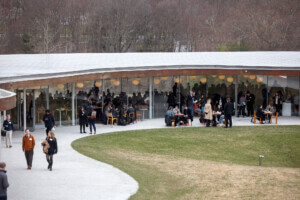Construction remains one of the most dangerous careers in the United States. To stop accidents before they happen, construction companies are turning to emerging technologies to improve workplace safety—from virtual reality, drone photography, IoT-connected tools, and machine learning. That said, some solutions come with the looming specter of workplace surveillance in the name of safety, with all of the Black Mirror-esque possibilities.
The Boston-based construction company Suffolk has turned to artificial intelligence to try and make construction safer. Suffolk has been collaborating with computer vision company Smartvid.io to create a digital watchdog of sorts that uses a deep-learning algorithm and workplace images to flag dangerous situations and workers engaging in hazardous behavior, like failing to wear safety equipment or working too close to machinery. Suffolk’s even managed to get some of their smaller competitors to join them in data sharing, a mutually beneficial arrangement since machine learning systems require so much example data; something that’s harder for smaller operations to gather. Suffolk hopes to use this decade’s worth of aggregated information, as well as scheduling data, reports, and info from IoT sensors to create predictive algorithms that will help prevent injuries and accidents before they happen and increase productivity.
Newer startups are also entering the AEC AI fray, including three supported by URBAN-X. The bi-coastal Versatile Natures is billing itself as the “world’s first onsite data-provider,” aiming to transform construction sites with sensors that allow managers to proactively make decisions. Buildstream is embedding equipment and construction machinery to make them communicative, and, by focusing on people instead, Contextere is claiming that their use of the IoT will connect different members of the workforce.
At the Florida-based firm Haskell, instead of just using surveillance on the job site, they’re addressing the problem before construction workers even get into the field. While videos and quizzes are one way to train employees, Haskell saw the potential for interactive technologies to really boost employee training in a safe context, using virtual reality.
In the search for VR systems that might suit their needs, Haskell discovered no extant solutions were well-suited to the particulars of construction. Along with their venture capital spinoff, Dysruptek, they partnered with software engineering and game design students at Kennesaw State University in Georgia to develop the Hazard Elimination/Risk Oversight program, or HERO, relying on software like Revit and Unity. The video game-like program places users into a job site, derived from images taken by drone and 360-degree cameras at a Florida wastewater treatment plant that Haskell built, and evaluates a trainee’s performance and ability to follow safety protocols in an ever-changing environment.
At the Skanska USA, where 360-degree photography, laser scanning, drones, and even virtual reality are becoming increasingly commonplace, employees are realizing the potentials of these new technologies not just for improved efficiency and accuracy in design and construction, but for overall job site safety. Albert Zulps, Skanska’s Regional Director, Virtual Design and Construction, says that the tech goes beyond BIM and design uses, and actively helps avoid accidents.
“Having models and being able to plan virtually and communicate is really important,” Zulps explained, noting that in AEC industries, BIM and models are now pretty much universally trusted, but the increased accuracy of capture technologies is making them even more accurate—adapting them to not just predictions, but the realities of the site. “For safety, you can use those models to really clearly plan your daily tasks. You build virtually before you actually build, and then foresee some of the things you might not have if you didn’t have that luxury.” Like Suffolk, Skanska has partnered with Smartvid.io to help them process data. As technology continues to evolve, the ever-growing construction industry will hopefully be not just more cost-efficient, but safer overall.











